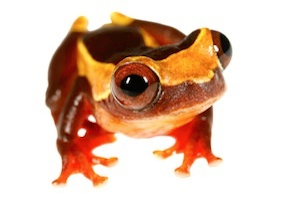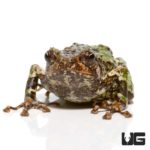Discover Your Perfect Rain Frog for Sale: Study the World of Unique Amphibians!
Discover Your Perfect Rain Frog for Sale: Study the World of Unique Amphibians!
Blog Article
The Very Best Reptile Enclosures: How to Produce the Suitable Environment
Developing the excellent habitat for reptiles is not practically putting them in a tank or enclosure; it involves a thoughtful factor to consider of different elements that add to their total well-being. From the dimension of the unit to the type of substratum made use of, every element plays a critical role in giving an atmosphere where your reptile can grow. By understanding the details demands of your reptile species and executing the ideal environment configuration, you can guarantee their wellness and joy in captivity.
Choosing the Right Enclosure Size
When choosing a room size for reptiles, it is essential to consider their all-natural behaviors and room needs to guarantee their health and wellness. Various reptile types have varying needs when it pertains to habitat room. Arboreal species like chameleons or tree serpents call for vertical room for climbing up and perching, while terrestrial species such as bearded dragons or leopard geckos require more floor room for exploring and thermoregulation. Water turtles like red-eared sliders require enclosures with both water and land areas for swimming and basking.
A basic regulation of thumb is to supply enough space for the reptile to show natural habits, such as basking, hiding, climbing, and foraging. By carefully taking into consideration the certain demands of the reptile species in question, owners can create an appropriate and enriching habitat that promotes total well-being and encourages natural behaviors.
Establishing Up Appropriate Home Heating Aspects
To make sure the wellness and wellness of reptiles in their units, it is necessary to very carefully establish correct heating aspects. Reptiles are ectothermic animals, implying they count on outside heat resources to regulate their body temperature. When setting up heating components in a reptile enclosure, it is important to take into consideration the particular temperature level needs of the types you are taking care of. Different reptiles have differing temperature level requires based upon their natural environment, so it is necessary to research and understand these requirements.
One usual and efficient burner for reptile units is a warmth lamp or ceramic warm emitter. These heat sources can be utilized to develop a temperature level slope within the unit, enabling reptiles to relocate in between warmer and cooler locations as needed. Additionally, under-tank hot pad or heat mats can be made use of to supply belly heat, which is specifically valuable for reptiles that need added warmth to help in food digestion.
Keeping track of the temperature within the enclosure using a thermostat is vital to make certain that the heating components are preserving the ideal temperature range for your reptile. Frequently check and change the home heating elements as needed to produce a healthy and comfy environment for your flaky pal.
Picking Appropriate Lighting Fixtures

Giving the Perfect Substrate
Picking the ideal substratum is necessary for producing a suitable and comfortable environment for reptiles in their units. Some reptiles, such as desert-dwelling varieties like bearded dragons, prosper on substrates like calcium sand or reptile carpet, while others, like round pythons, favor coconut husk or aspen bed linen to preserve humidity degrees.
Avoid substratums that can cause impaction, such as loose substratums like sand or gravel, specifically for reptiles understood to consume their bedding. Consistently cleaning and changing the substrate is crucial to ensure a hygienic and tidy setting for your reptile.
Decorating for Enrichment and Convenience
Considering the substratum's duty in supplying a structure for natural habits and keeping a suitable atmosphere, boosting the reptile enclosure with appropriate decors is vital for both enrichment and convenience. Decorations such as branches, rocks, hideouts, and man-made plants not only develop an extra visually attractive environment yet also serve practical functions. Branches give climbing opportunities for arboreal types, while rocks can work as basking places for warmth. Hideouts offer shelter and protection, reducing tension levels for the reptile. Man-made plants not just boost the aesthetics but likewise supply concealing areas and enrichment by permitting the reptile to interact and explore with its environment. When decorating the enclosure, it is vital to think about the reptile's species-specific requirements and visit habits to produce an area that promotes mental and physical well-being. By incorporating a variety of decorations that mimic the reptile's all-natural habitat, proprietors can ensure their animal's comfort and stimulate their natural impulses, inevitably leading to a happier and healthier reptile.
Verdict

Producing the excellent habitat for reptiles is not just regarding putting them in a container or enclosure; it includes a thoughtful factor to consider of numerous variables that contribute to their overall well-being.Choosing the proper substratum is essential for creating a appropriate and comfy setting for reptiles in their units. Some reptiles, such as desert-dwelling species like bearded dragons, flourish on substratums like calcium sand or reptile carpet, while others, like ball pythons, like coconut husk or aspen bed linens to keep moisture degrees.
By including a selection of decors that mimic the reptile's natural habitat, proprietors can guarantee their pet dog's convenience and boost their all-natural reactions, inevitably leading to a better and healthier reptile.
In final thought, creating the suitable environment for reptiles includes choosing Recommended Reading the suitable enclosure dimension, home heating components, lighting components, substrate, and decorations.
Report this page